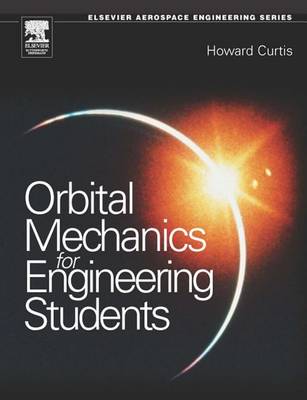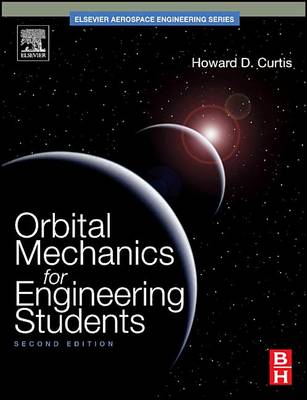Aerospace Engineering
2 total works
Orbital mechanics is a cornerstone subject for aerospace engineering students. However, with its basis in classical physics and mechanics, it can be a difficult and weighty subject. Howard Curtis - Professor of Aerospace Engineering at Embry-Riddle University, the US's #1 rated undergraduate aerospace school - focuses on what students at undergraduate and taught masters level really need to know in this hugely valuable text. Fully supported by the analytical features and computer based tools required by today's students, it brings a fresh, modern, accessible approach to teaching and learning orbital mechanics. A truly essential new resource.
Orbital Mechanics for Engineering Students, Second Edition, provides an introduction to the basic concepts of space mechanics. These include vector kinematics in three dimensions; Newton's laws of motion and gravitation; relative motion; the vector-based solution of the classical two-body problem; derivation of Kepler's equations; orbits in three dimensions; preliminary orbit determination; and orbital maneuvers. The book also covers relative motion and the two-impulse rendezvous problem; interplanetary mission design using patched conics; rigid-body dynamics used to characterize the attitude of a space vehicle; satellite attitude dynamics; and the characteristics and design of multi-stage launch vehicles. Each chapter begins with an outline of key concepts and concludes with problems that are based on the material covered. This text is written for undergraduates who are studying orbital mechanics for the first time and have completed courses in physics, dynamics, and mathematics, including differential equations and applied linear algebra. Graduate students, researchers, and experienced practitioners will also find useful review materials in the book.
* NEW: Reorganized and improved discusions of coordinate systems, new discussion on perturbations and quarternions * NEW: Increased coverage of attitude dynamics, including new Matlab algorithms and examples in chapter 10 * New examples and homework problems * Highly illustrated and fully supported with downloadable MATLAB algorithms for project and practical work; fully worked examples throughout; extensive homework exercises; Instructor's Manual and lecture slides.
* NEW: Reorganized and improved discusions of coordinate systems, new discussion on perturbations and quarternions * NEW: Increased coverage of attitude dynamics, including new Matlab algorithms and examples in chapter 10 * New examples and homework problems * Highly illustrated and fully supported with downloadable MATLAB algorithms for project and practical work; fully worked examples throughout; extensive homework exercises; Instructor's Manual and lecture slides.

